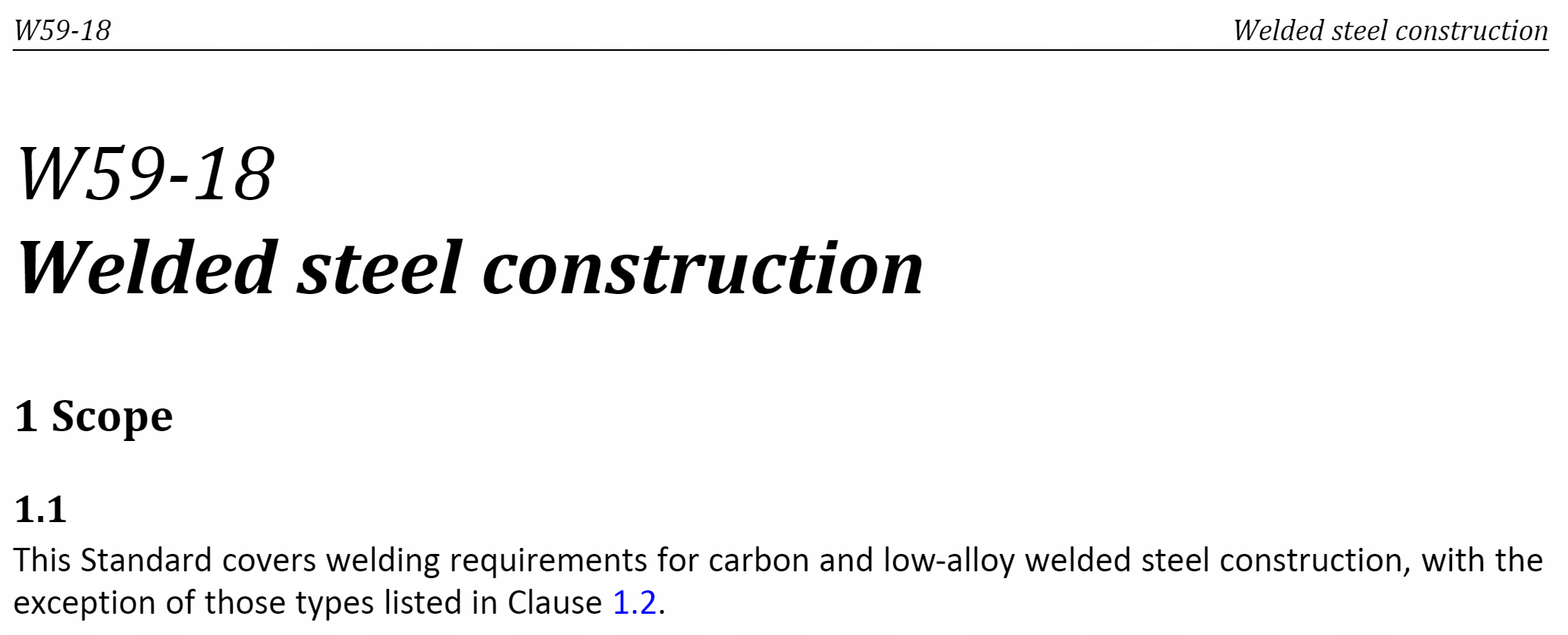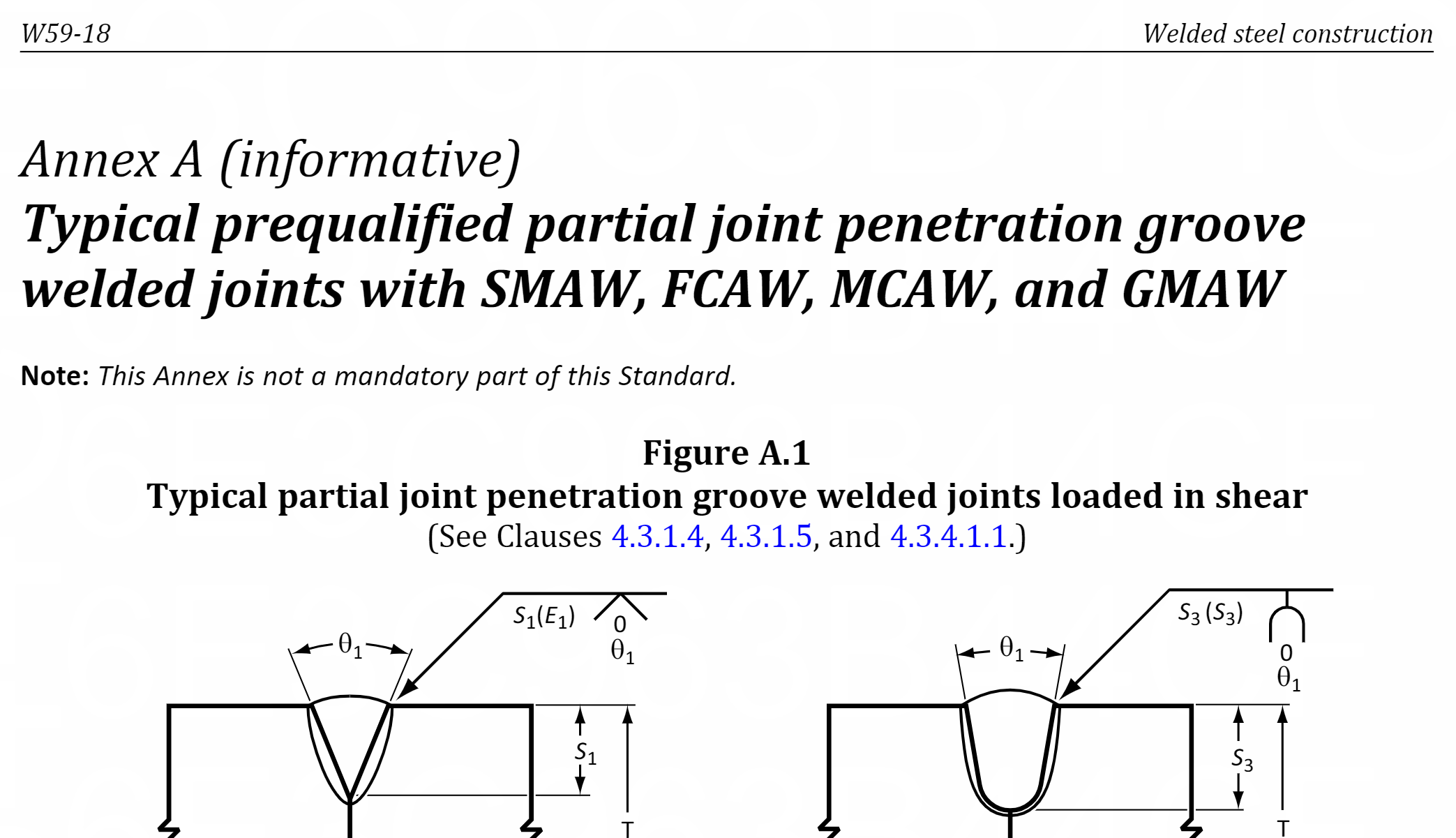Standards
Table of Contents
Getting Familiar With Standards
- This guide generally applies to CSA, ASTM, IEEE, and ISO standards although a CSA standard will be used as an example in this guide.
- Standards often vary between format and form between associations.
- Standards usually span a few hundred to just over a thousand pages in length.
- Different standards usually get extremely specific for different scenarios and single standards usually cover all cases.
- ex: If there is a standard on aluminum welding it will cover all aspects and situations where aluminum would need to be welded with almost no exception.
- Different standards groups operate in different regions and countries, and for different fields of interest.
- ex: CSA is Canadian, ASME is American, ASTM is International.
- Standards often fall into objects or acts, for example, a pipe could be standardized (an object) or steel welding could be standardized (an act/process).
- During standardization it is possible to deviate from the standard.
- You must simply note that there is deviation from the standard in the specific metric when writing up a standardization report/document.
The Different Components of a Standard
Title Page, Legal Notice, Table of Contents, and Contributors
These different components in a standard are usually grouped together at the very start of a document.
The title page is usually barebones and includes the publisher, year published, and other miscellaneous information. The table of contents helps user navigate the different sections of the standards and helps to quickly locate specific situations of interest. It also indexes any appendices or annexes for repeated reference.
The legal notice provides information about legal usage, copyright, patent rights distribution, and liability. This section is pertinent if you intent to copy any portion of the standard for your reference or if you intend to give it to a peer or colleague. Different standards have different restrictions so ensure that any distribution is thoroughly checked before-hand. When in doubt, its always best to contact the standards association themselves or the UW Copyright Librarian.
Finally, most standards often provide a list of contributors at the beginning of the document. There are often various committees that gather to work on the standards and their names and company/organizational affiliations are listed.
Table of Contents, Legal Notice | Contributors, Title Page |
Preface or Document Changes
This section of the standard states the version of the document as well as what versions the document you are looking at supersedes. The preface will list any significant difference or addition between the standard that you are browsing and the version before it. This allow the user quick access to see what is new when using a brand new standard such that they don't have to search the entire document to find it. There is often also a notes section with miscellaneous remarks that the publisher and committees felt it was important to add.
Preface |
|---|
Main Document Information
Scope
The scope describes exactly what the document standardizes and covers. Any misunderstanding about what topics or practices the standard applies to can be clarified here.
Scope |
|---|
Reference Publications and Definitions
This sections lists the different sources the standard was developed from or different publications that are referenced in the standard. This section can also serve as a list for extended reading where a method or technique relating to a situation or case may need to be researched further. This section also defines any terms or acronyms that the user will need to be familiar with when using the standard.
| Screenshot of Reference Publication Section and Definition Section | |
General Requirements
This section details the qualification requirements for standardization including symbols and terminology that must be used, any other standards that the object or act being standardized must conform to, selection of methods or design, and ideal processes (if its an act). This section varies greatly between standards, especially depending if it is an act or object that is being standardized.
General Requirements |
|---|
Main Section of the Standardization of The Object or Act
The majority of the document portion of the standard will be the actual standardization process and the explicit requirements for standardization in different scenarios. This varies significantly from document-to-document, but will always be the main portion where almost all standardization will be done. Every scenario that must be covered by the document will be listed in this portion, as well as any other information that will be pertinent to the standardization of the object or act, usually referenced to an annex or different section of the standard. In summary, to do the actual standardization of your object or task this section will be what you will be working through to meet the requirements. Specifically, it can also discuss any processes that have not already been mentioned, testing methodologies, and any apparatuses that are relevant to standardization.
Annexes, Indexes, or Post-Scripts
This section will usually make up the page majority of the entire document and includes any methods, auxiliary definitions related to the topic, any figures included in the standard (including graphs or diagrams), data tables, scientific method descriptions, imaging guidelines, and any other piece of information that may be directly relevant to the process of standardizing the act or object. This section comprises an incredible amount of bulk data and reference material that you may never use, but is useful to have just in case.
| Annex/Appendix |
|---|
Links to relevant standards:
References
[1] Welded Steel Construction, CSA W59-18, 2018.
Contributors:
| User | Last Update |
|---|---|
| Mayurakhi Khan | 1118 days ago |
| Former user (Deleted) | |
| Former user (Deleted) | |
| Former user (Deleted) | |
| Former user (Deleted) | |
| Former user (Deleted) |
Special thanks to the Canadian Standards Association









